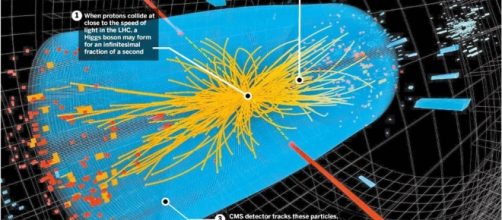In 2012 researchers conducting separate experiments at CERN announced that they had evidence of what seemed to be the long sought Higgs boson (H b). This particle was detected at a mass region of 125 eV/c2, giving conclusive evidence of the existence of this particle. Although, the H b had been searched in experiments since the 1990s, higher energies were needed that only were attained when the Large Hadron Collider (LHC) was built in Switzerland. With initial energies of 3.5 TeV, this facility provided the best grounds to uncover this scientific dilemma.
The Higgs boson
This elementary particle is the driving force behind the Higgs field, which is analogous to what the photon is to the electromagnetic field. Although the Higgs field cannot be seen, scientists believe that the interaction between this field and particles is what provides them with mass and that the excitation experienced at that interaction is proof of the existence of the H b, which is one of the two fundamental particles, the other being the fermions, in the standard model.
How is the Higgs boson produced?
To produce these types of particles, two beams of protons are accelerated inside a particle accelerator and made to collide at very high energies and speeds that reach the speed of lght.
A Higgis boson will be created in 1 out of 10 billion collisions; however, due that the H.B. decays very quickly, it cannot be detected directly, so the decay products are registered and the process is reconstructed. If the decay process matches an expected decay model or decay channel, a Higgs boson may have been produced, as predicted by the standard model.
Although the results in 2012 revealed that a new particle with bosonian characteristics had been discovered, further data was needed to confirm it, including decay rates in a number of channels-yy,zz,ww, bb and tt, the spin and parity. Finally on 14, march 2013 CERN confirmed, after comparing the data and consistency with the standard model, that the new particle was indeed the Higgs boson.
In 2016 the Brookhaven National Laboratory reported by the RHIC that the Large Hadron Collider (LHC) "performance surpassed expectations"results and confirmed the "Higgs particle." These show "bump" appears to be a "statistical fluctuation, and offer insight into quark-gluon plasma at high energies complementary to those explored at the Relativistic Heavy Ion Collider."

